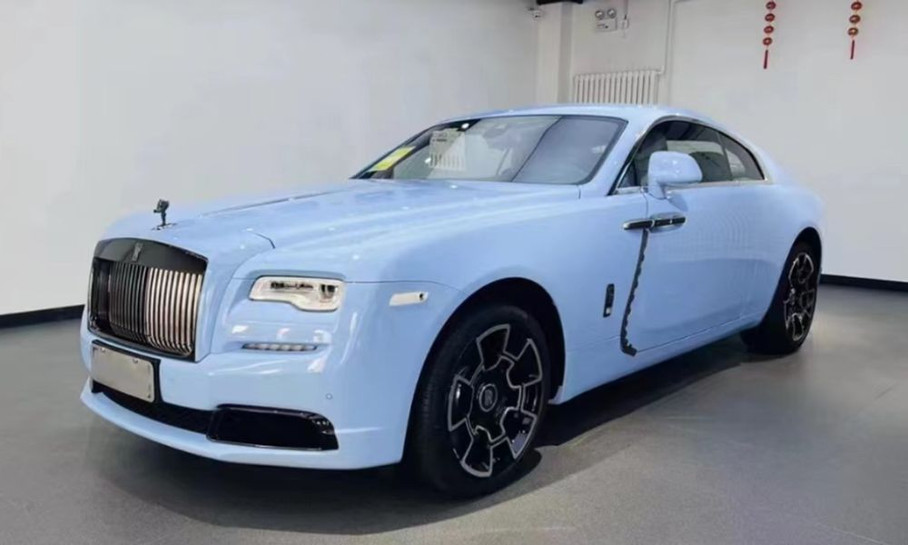For some people, owning a car is about more than just getting around. When having a luxury vehicle to get to your destination in style and comfort is not just a privilege but a necessity, there's no better choice than Rolls-Royce.
While many classic car manufacturers embody these values, many prefer Rolls-Royce due to the exclusive experience offered by the company. Here's how the Rolls-Royce brand became the peak of luxury.
Starting Out
Charles Rolls and Henry Royce partnered to found Rolls-Royce in 1904 as a means to create a quality brand that could withstand the test of time. As the owner of C.S. Rolls and Company, Charles Rolls had an eye for value. Henry Royce wanted to improve existing car manufacturing techniques to create the best vehicles money could buy.
Not only were the cars well-designed, but they performed well and were incredibly comfortable. The early company's vision helped it make a name for itself as a luxury brand that drew the attention of individuals with money to spend. Their first production vehicle, the Model 10 Type A, sold for only $784. Those still in existence can go for millions of dollars today.
Expanding the Vision
Soon after the first vehicles got sold, Rolls-Royce expanded its vision to new models that would prove increasingly popular among the public. While the original two-cylinder 10HP design was only in production for a couple of years, they soon began manufacturing three and four-cylinder vehicles that could get up to 20HP.
By 1920, Rolls-Royce vehicles cost over $12,000. The Phantom had nearly 60HP and could go up to 80 MPH. It beat out much of the competition due to the company's focus on luxury and benchmark performance requirements. At this point, affluent customers purchased many of their vehicles to use as chauffeurs.
Civil and Defense Manufacturing
World War I saw close partnerships between businesses and the government to supply essential manufacturing services for the military. Rolls-Royce used the opportunity to expand its focus to aircraft engines. Henry Royce's engine, the Eagle, got used in the first aerial transatlantic crossing.
As the company became essential to the growth of aeronautics, it honed its expertise and continued to innovate its engine designs. Unfortunately, Charles Rolls died in an airplane accident in 1910, leaving Royce to push the boundaries of engine design on his own.
Breaking Records
Over the next decade, Rolls-Royce expanded its business into new fields. The company continued developing innovative machines and expanded into marine engines. Their "R" engine broke the record for fastest airspeed and was in well-known WWII planes such as the Spitfire and Hurricane.
Their engines were present during famous flights by pilots including George Eyston, Sir Henry Segrave, and Sir Malcolm Campbell. Henry Royce passed away in 1933, just a few years before the start of the Second World War. While the company's foray into aeronautics was foundational for its success, it would soon see a boom in car manufacturing as the world settled into peacetime.
The Classic Car Era
Over the next few decades, Rolls-Royce developed iconic vehicles. Models such as the Silver Shadow, Silver Cloud, and Silver Dawn were highly successful. They dramatically changed how people viewed luxury vehicles, offering improved braking, suspension, and engine performance, which many customers considered well worth the additional cost.
Many car fans consider the Corniche one of the best models the company has ever designed. Stalled initially by the onset of WWII, the vehicle would eventually make its way to market in the 1970s, offering independent suspension, disc brakes, and automatic transmission. The company made them to go long distances without breaking down, making them perfect for the growing car culture in the US and Great Britain.
Celebrity Endorsements
They brought back their popular Phantom model, as the Phantom IV, in 1958. However, they made less than 20, and dignitaries and heads of state primarily used them. Their rarity made them a big draw to prestigious individuals. The British Royal Family still owns one to this day.
The next iteration, the Phantom V, was a popular celebrity vehicle throughout the 1960s. You could spot John Lennon, Elvis Presley, and other incredibly famous figures driving them. Today, most enthusiasts would be happy to have a Phantom IV or V Rolls-Royce toy car for their collection.
Acquisitions and Mergers
In 1971, Rolls-Royce voluntarily liquidated its assets due to financial troubles. The U.K. government purchased the rights to the company and eventually resold it to Volkswagen. The aircraft manufacturing arm of the company remained under the Rolls-Royce banner, which they licensed to BMW.
By 2011, the company's brand and images were owned by Rolls-Royce Holdings plc, a rebranding of the original liquidated company from 1971. Their most significant investments have been in the aerospace industry, where they work closely with the government on next-generation space programs.
Contemporary Designs
Today, Rolls-Royce still manufactures iconic vehicles that push the boundaries of style and performance. The Sweptail, powered by a 6.75-liter engine, is capable of up to 453HP and 155 MPH. It costs over 12 million USD, making it one of the world's most expensive cars.
The Rolls-Royce Dawn, released in 2022, can go 0-60 in 4.1 seconds. The company focused on the engine and transmission, achieving maximum performance from the 6.6 liter V-12. Its eight-speed automatic transmission makes driving more of a luxury than ever before.
Moving Forward
Continuing to evolve, the company released its SUV, the Rolls-Royce Cullinan, in 2018. Considered one of the smoothest riding SUVs ever manufactured, the vehicle uses sound-reducing materials and extra-thick glass to give passengers a quiet ride.
Sustainability has become more critical than ever for Rolls-Royce. The company is planning on moving to full-electric vehicles by 2030. The Rolls-Royce Spectre EV can go 0-62 in 4.5 seconds and has over 310 miles of range. It combines energy-efficient technology with the company's classic design sense to create something unique.
A History of Ingenuity and Innovation
The Rolls-Royce brand has come a long way since its inception. Over the past century, the founder's original intention to create quality production vehicles with the best performance hasn't gotten lost.
Rolls-Royce has worked to adjust its manufacturing processes to world events and technological changes, allowing them to continue to innovate their original designs. This focus and dedication have allowed the Rolls-Royce brand to become the peak of luxury and live on even as the market changes.


